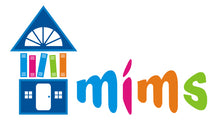AI, ChatGPT, MidJourney, DallE: What is AI for Kids?
2023 is turning out to be the year of AI, artificial intelligence. Everyone is talking about AI, ChatGpt, MidJourney, Dall-E2 and other programs using machine learning to create text or images. But what do kids understand about AI? How can we explain it to them in a fun, meaningful way?
AI for Kids: Fun Book to Explain AI to Kids

On March 9, 2016, in Seoul, Korea, the stage was set for a showdown between man and machine. A computer program, AlphaGo, would play the game of GO against the world champion, Lee Sedol.
Why did scientists use a game to develop AI? Because games have rules that AI can learn. Games also have scorecards and someone wins or loses. This allowed scientists to measure how the AI program was doing.
They selected the game, GO, because it's one of the most popular board games worldwide. Basically, white and black battle to control the most territory on the board.
How Do you Teach AI How to Do Something?
AlphaGo was a program developed by the UK company Deep Mind. To train an artificial intelligence, scientists give it lots of data. Lots. AI needs massive amounts of data when its being trained, when it's in the learning phase.
There are two ways to teach a program. First, you can give it rules. If you want the program to recognize a cat. You might give it rules that say:
- A cat has a round head.
- It has ears shaped like triangles.
- A cat has a tail.
That's a good start. But what if the cat is chasing a rat and its ears are flat on its head? Or what if the cat is curled up asleep and you can't see its tail? You need more rules. For every variation on what a cat looks like, you need a new rule. Soon, there are too many rules.
Instead, the second way to train AI is to give it data that is labeled: Cat or NOT Cat. If the AI is given enough data, then it creates its own "idea" about cats. It's not rules, but rather a complicated mathematical calculation based on the data. Kids don't need to know the math. What they need to know is that, with enough data, AI starts to recognize patterns. The math describes the pattern that says, "This is a cat."
AI works because it analyzes lots of data and finds patterns.
Teaching AI for Kids - Pattern Recognition
Any games, lesson plans or programs that teach pattern recognition will help kids understand AI. Often the task is recognize a pattern and then repeat it. Or sometimes it is to recognize a pattern, and then find the example that doesn't follow the pattern.
- Songs or stories with a chorus or refrain
- Patterns of shapes: square square circle, square square circle
- Stack, sort, or count blocks
- Match socks by size and color
- Sort silverware into forks, spoons, and knives
After a pattern game, talk about how the AI program is doing the same sort of thing. It is learning CAT or NOT CAT and developing way to say that with math.
Of course, once an AI program learns CAT, it also needs to learn DOG, DUCK, ELEPHANT, and so on. AI programs layer these bits of knowledge to create a complete mathematical description of animals. Then when you ask the AI to look at a photo of an animal, it can identify it.
Man against Machine - Lee Sedol
This book presents the question: who is smarter, the machine or the man. After reading this AI story, you can talk about the value of AI and what part AI plays in our daily lives. Is AI something to be scared of? Or can people learn to use it to help with many tasks?
Teaching kids about AI starts with pattern recognition. From there, you can discuss the implications of AI in society. Do you want to talk about ChatGPT for writing essays or research papers? Or discuss using MidJourney or Dall-E2 to create images? Start with a simple explanation of how patterns help AI learn to recognize things.




